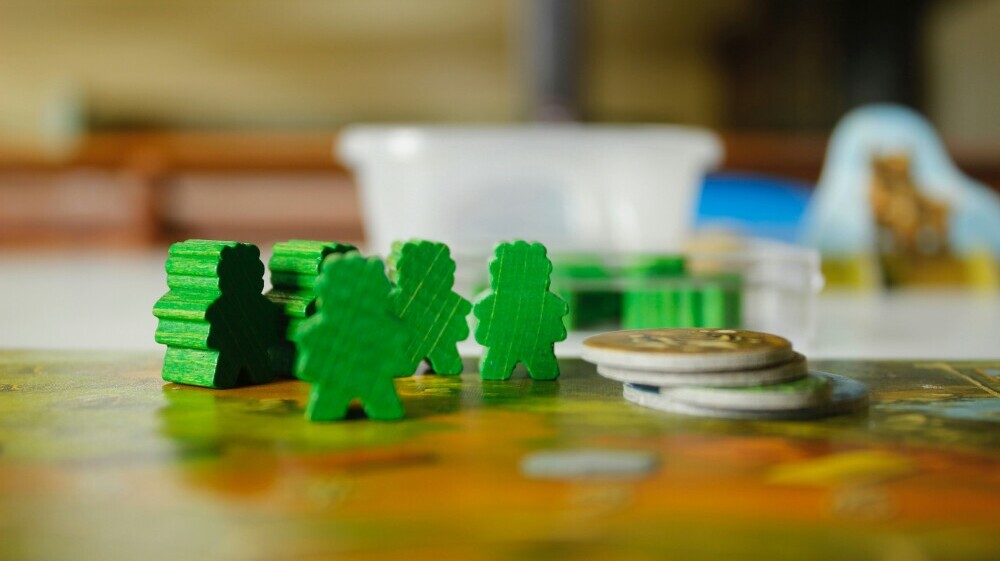==================
Affiliate Statement and a Caveat
First off, a little caveat: within my articles you will find affiliate links, meaning if you buy them, I get a small commission. Your cost is not affected. In addition, I am an Amazon Associate and I earn from qualifying purchases on Amazon.
And yes, if I say that I recommend a product here, it means I truly believe it is a good product. I refuse to recommend any product that I have not researched and believe to be a good value.
Even better, I provide you with a very clear picture of the product, it’s use, and the probable value.
Earning your trust is important to me. I run this website myself and the commissions and donations help support the site.
Sound reasonable and fair enough? Let’s continue to the article.
==================
Creating the right vibe for family game night is where it all begins. You want a space that’s comfy and has enough room for everyone to get cozy and stay engaged. Whether it’s spreading out in the living room or setting up in the dining area, the environment makes a huge difference.
Next up is setting the mood with some ambient lighting and maybe a bit of background music—nothing too overpowering, just enough to keep the energy in the room up. You’d be surprised what a few dimmed lights and some upbeat tunes can do to transform your space.
Snacks and drinks are a must if you’re going to keep everyone happy throughout the night. Think finger foods like popcorn, fruit bites, or maybe some homemade cookies. They keep the mess at bay but also make snacking part of the fun.
Here’s a thought: declare game night a tech-free zone for that evening. Unplugging from screens encourages everyone to focus on the games and each other, making interactions more genuine. It’s like hitting the refresh button on family bonding.

Game Design 101: Crafting Your Own DIY Games
Bringing something personal to your game night can amplify the fun, right? Creating your own games gives you that chance to put a unique spin on the usual shenanigans. Plus, you get to decide the rules, ensuring they’re family-friendly and suit everyone’s tastes.
Getting started with designing your own board game might sound tricky, but I’ve got you covered. First, sketch out your game idea—what’s the theme, who are the characters, and what’s the goal? Use materials around the house like cardboard, markers, and old game pieces to bring it all together.
Card games are another option and can be personalized with family photos or in-jokes. Think about a familiar card game and add your tweaks. Short commandments can make rounds special—whether it’s funny questions or mindful challenges.
If you’re new to game design, check out online resources for templates and ideas. Many websites offer printables or guides to help beginners in getting creative juices flowing. DIY game design can be a bonding project that gets everyone involved, from the young kids drawing elements, to older ones strategizing the game flow.
Classic Family Games with a Twist: Fresh Takes on Old Favorites
Taking classic games and giving them a fresh spin can revitalize game night in exciting ways. Start with a family favorite like Monopoly, but make it your own by customizing properties with funny local spots or family in-jokes. It adds a personal touch and endless laughs as players land on ‘Grandma’s House’.
Games like Pictionary or Charades are always a hit, but adding new rules can switch things up. Try imposing a time limit that’s hilariously short or adding quirky challenges like drawing with your non-dominant hand. These changes keep everyone on their toes and the atmosphere buzzing.
Creating hybrid game experiences by merging elements from different games is another great idea. Imagine combining pieces of Trivial Pursuit with elements of a scavenger hunt. It keeps family members engaged with something unexpected, and you might be surprised by the imaginative ways your family will embrace the challenge.
Incorporating family inside jokes into games deepens the fun. Use personalized cards or board elements that have history and humor unique to your household. It makes game night not just about winning, but about sharing laughs and memories, keeping the experience fresh every time.

Puzzling Fun: Engaging DIY Brain Teasers and Puzzles
Homemade puzzles and riddles can be a lot of fun and a great way to challenge everyone in the family. Start simple with basic crosswords or word searches using themes that matter to your family, like favorite vacations or beloved pets.
Taking it up a notch, design your own escape room experience at home. Use different rooms for different segments of the puzzle, with each solved clue leading to the next. It’s not just a game but a full-on adventure everyone can get involved in creating and solving.
Involve the kids in puzzle-making. Whether it’s drawing up a fun maze with backyard sidewalks or piecing together elaborate treasure maps, the creativity involved is great for their imagination.
Online resources offer plenty of printable and DIY options for brain games. Find or create puzzles that suit your family’s interests. These can be adjusted to varying difficulty levels, ensuring that everyone finds a puzzle that’s perfect for their skill level and interest.
Themed Game Nights: Creating Memorable Experiences
Themed game nights can turn a typical evening into an unforgettable event. Choose a theme that resonates with your family—be it retro vibes from the ’80s, a night inspired by your favorite movies, or a seasonal celebration.
Once you have a theme, align the activities accordingly. For a movie-themed night, you could match games with film trivia or even create characters based on family favorites. If you’re going seasonal, think about games that relay the spirit, like a snowball toss or a summer scavenger hunt.
Decking out your space with decorations relevant to the theme can amp up the excitement. Simple touches like themed tablecloths, or maybe even costumes, take the atmosphere up a notch. It’s about creating an immersive experience where the family can let loose and dive into the theme fully.
Planning a themed itinerary helps things run smoothly. List out games, food breaks, and intermissions for storytelling or sharing memories related to the theme. Detailed planning ensures that the night flows seamlessly while keeping everyone engaged and entertained throughout the event.
Collaborative Fun: Co-op Games for Family Team Building
Focusing on cooperation and teamwork can bring your family closer together during game night. These games are less about who wins and more about working as a unit to achieve common goals.
Explore collaborative board games where players unite against a common challenge. Games like Pandemic or Forbidden Island require strategic planning and communication, making them excellent for fostering teamwork.
Digital platforms now offer online co-op games that can be played together on tablets or computers. They’re a great choice if you’re looking for something new and exciting without having to buy a physical game set.
Looking to others for inspiration can kick things off. Check out how other families have made team building a central game night element. Their success stories can offer ideas and encouragement for your own hosting journey.

Outdoor Game Adventures: Expanding Beyond the Living Room
Take the excitement outdoors by crafting DIY games that let everyone stretch their legs and enjoy fresh air. Simple backyard ideas like a homemade obstacle course can bring out the competitor in everyone, blending creativity with action.
Scavenger hunts are amazing for engaging both the young and the young-at-heart. Develop a list of items or landmarks in the yard or nearby park and watch as teams race to find them. It’s a perfect way to merge exploration with teamwork.
How about nature-inspired games that mix learning with fun? Activities like a tree identification challenge or a bird-watching bingo offer educational moments, making the outdoor experience as informative as it is enjoyable.
Safety and fun need to go hand-in-hand during these outdoor escapades. Establish clear play zones and rules, keeping everyone aware of boundaries and objectives. Ensuring safety doesn’t mean compromising on fun—it means everyone can relax and enjoy the games without worry.
Reflect and Evolve: Gathering Feedback and Planning Future Game Nights
Collecting feedback is key to making sure future game nights are even better. Encourage everyone to share what they loved and what could be improved. This open dialogue can spark new ideas and innovations for your next gathering.
Once ideas are flowing, identify the crowd’s favorite games and activities. Maybe certain games brought more laughs or intense competition—knowing what works will help tailor future events.
Consider keeping a family game night diary or scrapbook of the best moments, favorite games, and even reflections from each event. This record serves as a treasure trove of memories and a guide to planning.
As time goes on, adapt versions of games and activities to suit evolving family dynamics and interests. Whether you have new family members joining or the kids growing up, flexible planning keeps the tradition engaging for everyone.

